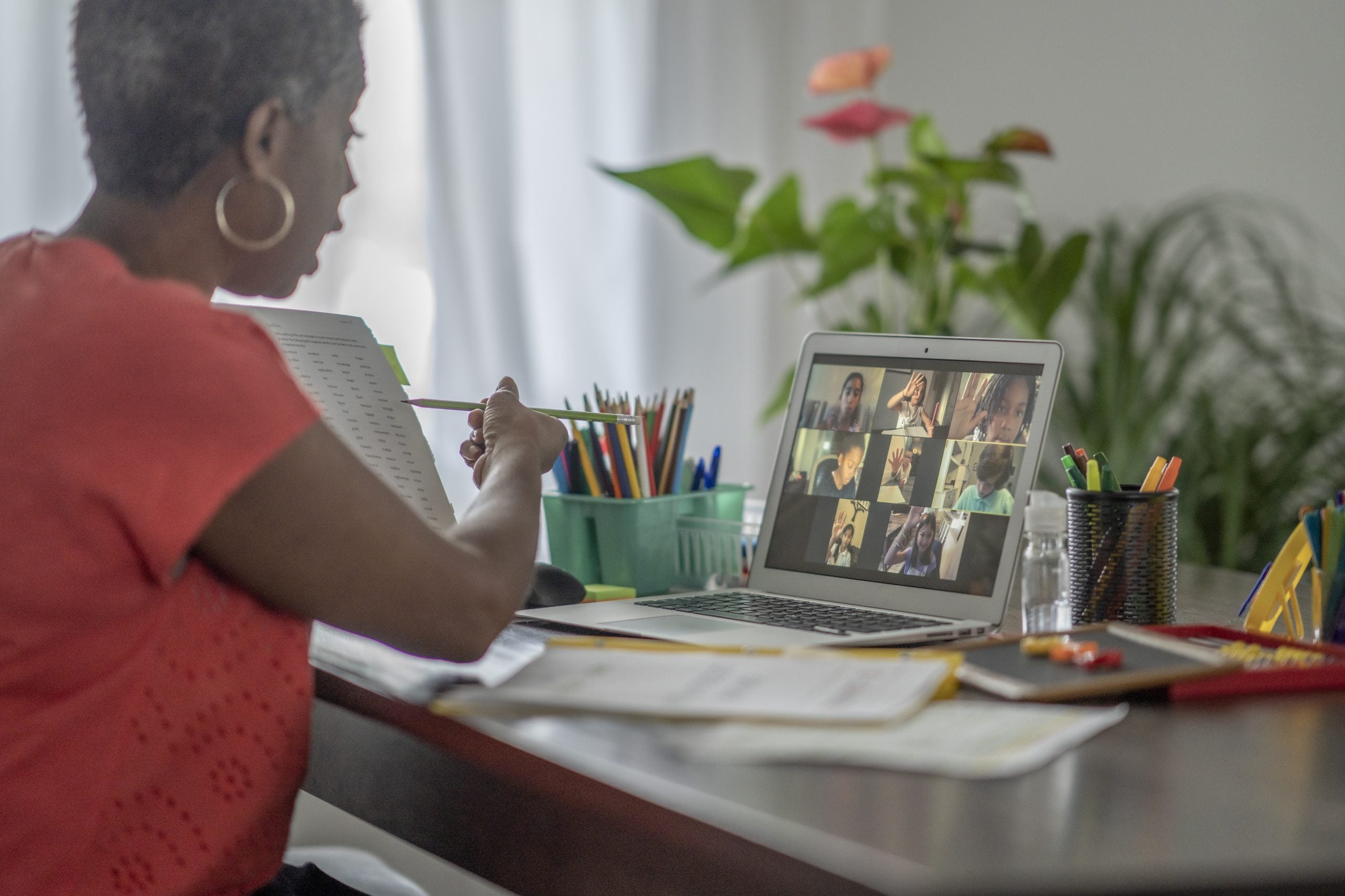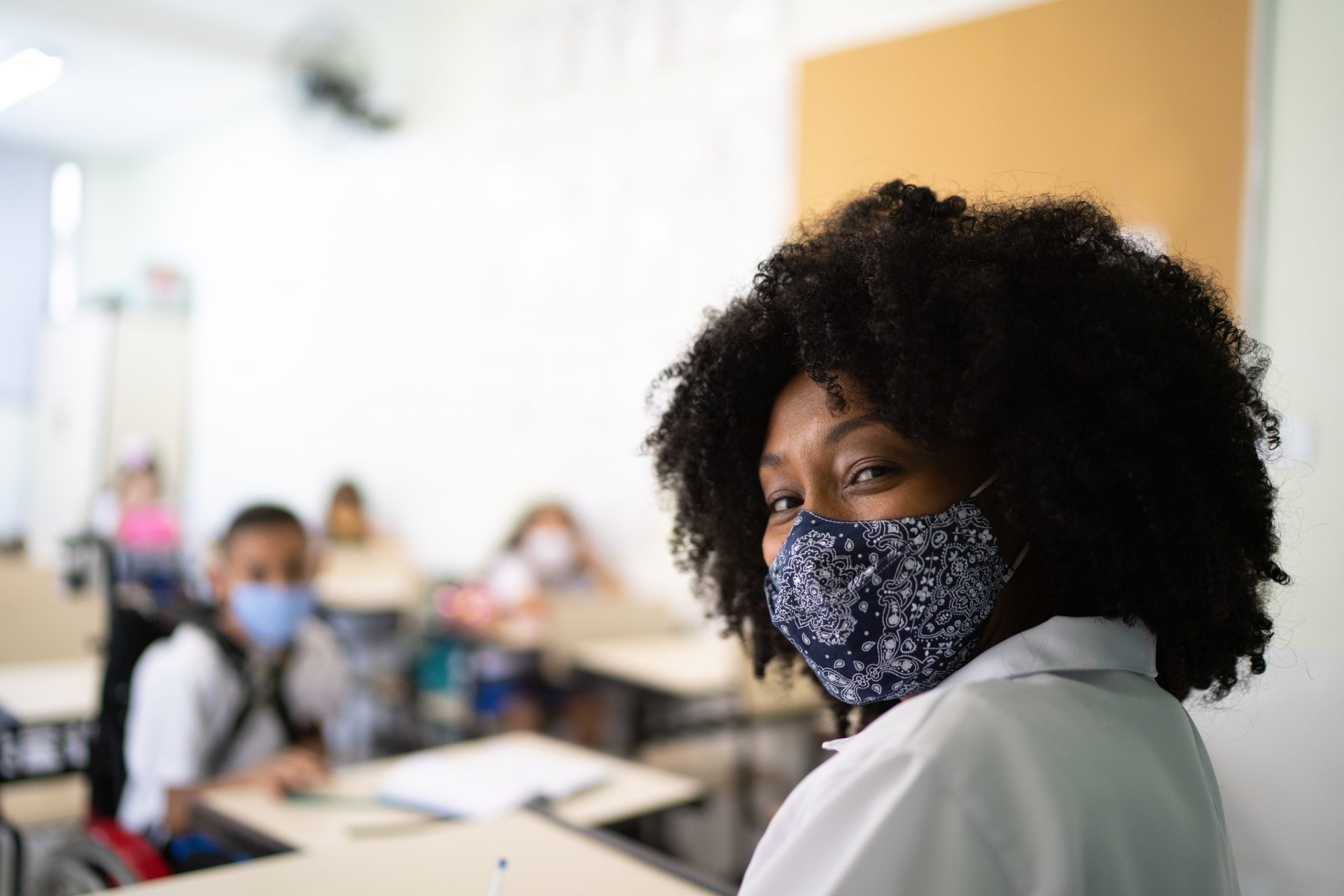














Teachers inspire us. They ignite our passions and reveal the world around us, help us to grow from elementary and high school students into the people we are today. Always a demanding, but rewarding role, teachers are truly on the front lines of the virus as the pandemic reaches its one-year anniversary.
“The COVID-19 pandemic has negatively affected many people’s mental health,” said Dr. Yolanda Lawson, FACOG, Trustee, National Medical Association. In fact, 42% of U.S. adults reported anxiety or depression at the end of 2020 as compared to 11% in 2019, according to the U.S. Census Bureau, Household Pulse Survey 2020.
To better understand how teachers are navigating the pressures of the current landscape, we asked Jacqueline McClendon, a Kindergarten teacher in Jackson, MS and Stephanie Gates, a middle school teacher in Chicago, IL to share their experiences and tips for their colleagues across the country. We also tapped into Licensed Psychologist and host of the Therapy for Black Girls podcast, Dr. Joy Harden Bradford for ways teachers can support their mental health now and in the future.
Class is in Session
Throughout her childhood, Jacqueline had some amazing teachers who inspired her to be the best version of herself. And now, 21 years into her career, she is teaching all subjects to a very eager group of Kindergartners, “working with five-year old children has been by far the highlight of this school year.” Similarly, Stephanie is a seasoned teacher as well. Inspired to pursue teaching by her mother and sister, this is Stephanie’s 29th year in the Chicago Public Schools system and while her first job was challenging, she stuck it out and is now teaching Social Studies and Civics to 7th and 8th graders. “This year is both exciting and scary because there is so much happening in the world, I want my students to understand that they are living through history,” says Stephanie. “They will be able to provide first-hand accounts of all that has and is unfolding.”

Old Challenges Meet New Ones
As public-school teachers, both women have always faced many challenges. Funding has historically been an issue for Jacqueline, from out-of-date textbooks to run-down buildings to low salaries, but now the pandemic has made her work life more demanding than ever. She now spends all of her non-school hours lesson-planning, learning new technologies and platforms, and brainstorming with other educators on how to capture her students’ attention virtually. And personally, she hasn’t been able to see friends and family because she has a heart condition and is high-risk, “not being able to physically gather has been tough, but necessary,” she says.
Stephanie is facing similar issues, she is also learning new programs and working closely with colleagues. “There’s a lot going on while people think that teachers are sitting at home binge watching Netflix,” she says. “Between the technological glitches, students not logging in and the mandates from the district, it’s stressful.” Like many schools across the country, she started the year virtually without the opportunity to build relationships before barging into their personal space, “I am in my students’ homes without an invitation,” she says. “I teach middle school which is a challenging age any way, now add the layers that come with virtual learning.” Plus, a social person by nature, Stephanie was always on the go until everything came to a screeching halt. Living by herself, she has made the best of it by getting her own Zoom account to stay connected with family and friends, but it can still be lonely. According to Dr. Bradford, the mental tenacity, stress management and emotional intelligence that we ask our teachers to have in a system that often does not protect them is unfair and is a serious detriment to one’s mental health. “The anxiety related to choosing whether you can show up for a job you love vs. your health is significant and this is what we’ve asked many teachers to do this year,” she adds. She advises teachers to be on the lookout for disinterest in things that you once found enjoyable, difficulty not sleeping enough or sleeping more than usual, increased worrying, changes in appetite, increased irritability, and feelings of despair or hopelessness. Any of these symptoms could be an indication that additional support would be helpful for you.

The Need for Self-Care is Real
To release the pressure, Jacqueline has her own dance party in her classroom after the students leave each day, then she sits in her car to embrace the stillness before driving home. Stephanie has also found joy in the quiet moments by journaling. She writes 10 things she is thankful for every day, from the serious to the silly and everything in between.
Both women have advice for their fellow educators out there and it starts with putting the teacher cape away. Jacqueline says to leave work (and the stress) at work, while Stephanie adds that you need to establish boundaries and “let some things go and be ok in your humanity.” Jacqueline goes on to invite you to let your home be your oasis, stay in the shower an extra 15 minutes, put on comfortable clothes and watch your favorite shows. She says, “do what makes your heart happy, and do not feel the need to apologize for it.” And Stephanie advises to find your tribe (your teacher friends know what you’re going through, so check in with each one), remember that ‘no’ is a full sentence and really stop and take a breath, especially when you are feeling overwhelmed. She also says that we will get through this, “our ancestors weren’t extraordinary women, they were ordinary women doing extraordinary things, and they left us the blueprint.”
Echoing their ideas, Dr. Bradford says to get into a habit of practicing meditation or other mindfulness to cultivate calmness even when outwardly there may be chaos. Also being outside, letting the sun or wind hit your skin even for a few minutes can be really helpful. And lastly, “I’d also encourage having spaces where you can discuss things beyond work so that you stay connected to the other areas of your life.”
What to Do Now
For Black women looking for recommendations to support their overall wellbeing and mental health, Dr. Bradford offered some ideas. Joining communities like Release the Pressure (RTP) that prioritize self-care as an act of self-love can be a great space to indulge in. Plus, Headspace resources such as the wind down workout available on the RTP website can offer helpful meditation practices. Also, she has some excellent episodes of the Therapy for Black Girls podcast discussing topics like setting boundaries and practicing self-compassion that may be helpful as well as a therapist directory for anyone who may need additional support.